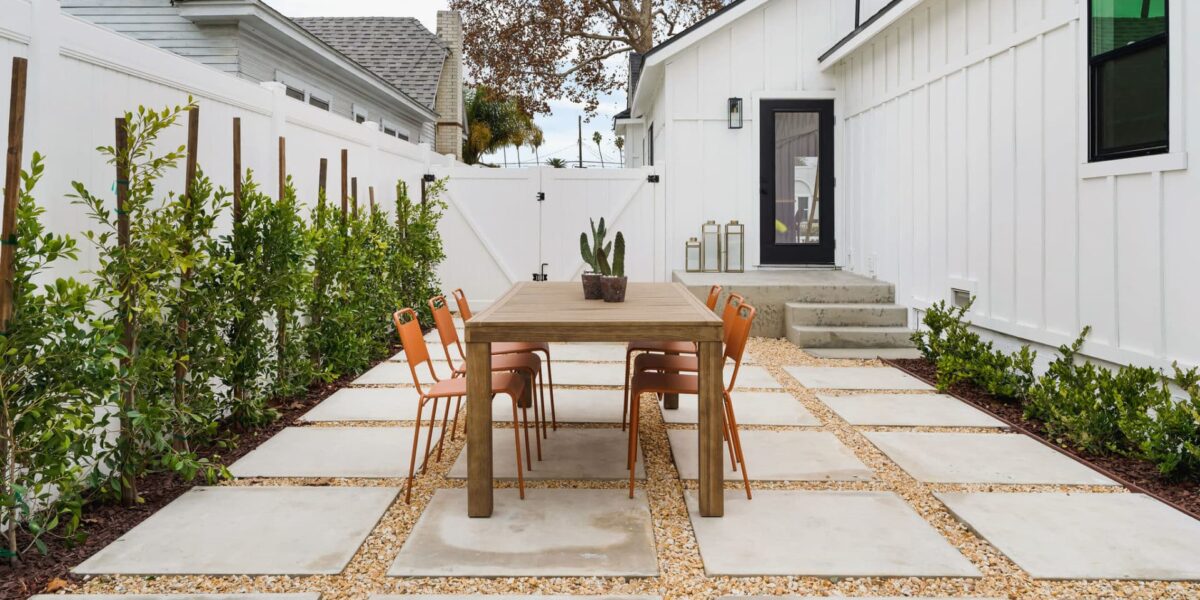Planting Side of House: Design, Selection, and Creative Ideas takes you on an inspiring journey through the world of landscaping, revealing the secrets to transforming the side of your home into a breathtaking oasis. With a wealth of scientific knowledge and practical advice, this guide empowers you to create an outdoor space that not only enhances your curb appeal but also provides a sanctuary for relaxation and rejuvenation.
From choosing the right plants for your specific conditions to implementing innovative planting techniques, this comprehensive resource equips you with the tools to design and maintain a side yard that is both aesthetically pleasing and ecologically sound.
Landscaping Design: Planting Side Of House

Landscaping the side of your house offers opportunities to enhance curb appeal and create a cohesive outdoor space. To achieve this, it’s essential to consider the sun exposure, soil type, and desired aesthetic when selecting plants and designing the layout.
The principles of landscape design aim to create a balanced and visually appealing outdoor space. This includes considering the scale, proportion, and color of plants, as well as the use of hardscaping elements like pathways and retaining walls.
Plant Selection
Choosing the right plants is crucial for a successful landscape design. Here are some factors to consider:
- Sun exposure: Plants have varying sun requirements, so it’s important to select species that are suitable for the amount of sunlight the side of your house receives.
- Soil type: Different plants prefer different soil types, such as well-drained, sandy soil or moisture-retentive clay soil.
- Desired aesthetic: Consider the overall style you want to achieve, whether it’s formal, informal, or a mix of both.
Some suitable plants for planting on the side of a house include:
- Full sun: Daylilies, coneflowers, yarrow, lavender, rosemary
- Partial shade: Hostas, ferns, astilbes, bleeding hearts, hydrangeas
- Full shade: Impatiens, begonias, coleus, ferns, ivy
Hardscaping Elements
Hardscaping elements, such as pathways and retaining walls, can complement the planting scheme and enhance the overall functionality of the space.
- Pathways: Create easy access to different areas of the yard and define the flow of traffic.
- Retaining walls: Help prevent soil erosion on sloping areas and create level planting beds.
By carefully considering the principles of landscape design and incorporating a mix of plants and hardscaping elements, you can create a beautiful and inviting outdoor space on the side of your house.
Plant Selection and Maintenance

Selecting the right plants for the side of your house is crucial to enhance its aesthetic appeal and create a thriving outdoor space. Consider factors like the amount of sunlight, soil conditions, and desired plant size and shape. Native plants are often a great choice, as they are well-adapted to the local climate and require less maintenance.
Once you have selected your plants, proper soil preparation is essential. Amend the soil with organic matter like compost or peat moss to improve drainage and fertility. Dig a hole twice as wide as the root ball and just as deep. Place the plant in the hole and backfill with soil, tamping down gently to remove air pockets.
Watering
Watering needs vary depending on the plant species and climate. Generally, water deeply and infrequently, allowing the soil to dry out slightly between waterings. Avoid overwatering, as it can lead to root rot.
Fertilizing
Fertilize plants according to their specific needs. Use a balanced fertilizer during the growing season and follow the instructions on the product label. Avoid over-fertilizing, as it can burn the plants.
Pruning
Pruning is essential to maintain the shape and health of your plants. Remove dead or diseased branches, and trim back overgrown stems to encourage new growth. Prune flowering plants after they have finished blooming to promote future flowering.
Benefits of Native Plants
Native plants offer several benefits, including:
- They are adapted to the local climate and soil conditions, requiring less water and maintenance.
- They provide food and shelter for local wildlife, supporting biodiversity.
- They can help reduce erosion and improve air quality.
Considering Local Climate and Growing Conditions
When selecting plants, consider the local climate and growing conditions. Choose plants that are suited to your hardiness zone and that can tolerate the amount of sunlight and rainfall in your area. This will ensure that your plants thrive and remain healthy.
Creative Planting Ideas
Planting along the side of a house offers a unique opportunity to enhance the home’s aesthetics and functionality. By incorporating innovative planting ideas, homeowners can create visually appealing outdoor spaces that serve various purposes.
Vertical Gardens, Planting side of house
Vertical gardens are a space-saving solution that adds a touch of greenery to vertical surfaces. These gardens can be created using trellises, wall-mounted planters, or living walls. They are perfect for growing climbing plants, such as ivy, clematis, or honeysuckle, which can provide privacy and create a lush, cascading effect.
Raised Beds
Raised beds are elevated planting areas that provide better drainage and soil conditions for plants. They can be constructed from various materials, such as wood, brick, or metal. Raised beds are ideal for growing vegetables, herbs, or flowers, and they can also be used to create a tiered effect that adds visual interest to the landscape.
Container Gardening
Container gardening is a versatile option that allows homeowners to grow plants in containers of various sizes and shapes. Containers can be placed on patios, decks, or even along the side of the house. They are perfect for growing small trees, shrubs, or flowers, and they can be easily moved around to create different arrangements.